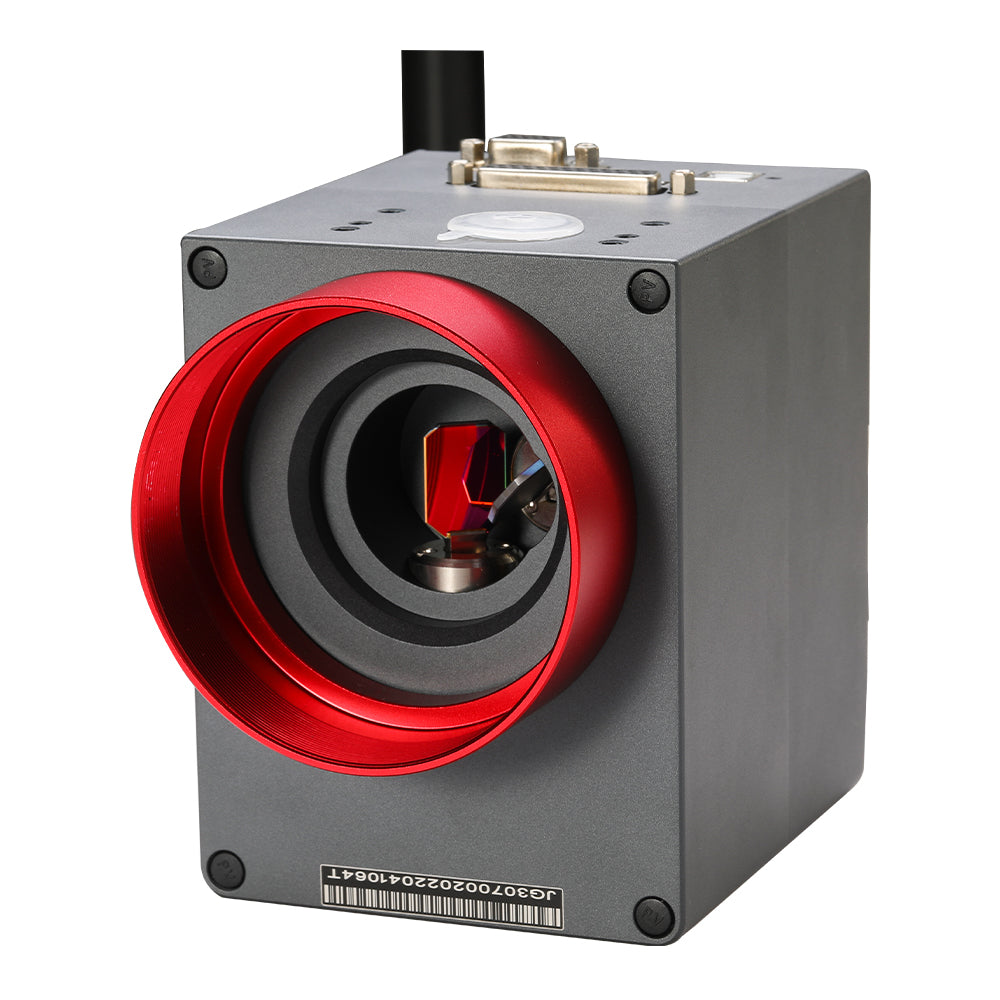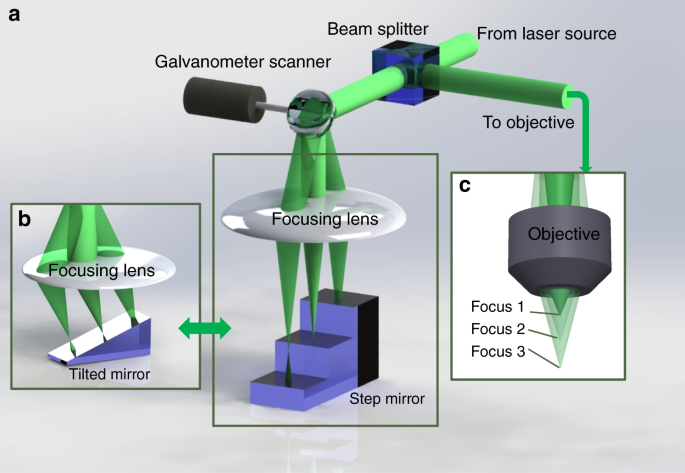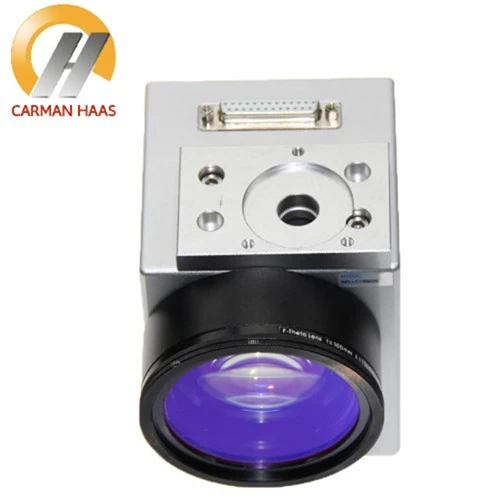The Duty of a Galvanometer Scanner in Enhancing Laser Interaction Systems
The Duty of a Galvanometer Scanner in Enhancing Laser Interaction Systems
Blog Article
Key Applications of a Galvanometer Scanner in Various Scientific Study Area
Galvanometer scanners have actually come to be integral to different scientific study fields, offering enhanced precision in applications varying from biomedical imaging to environmental surveillance. As we check out the diverse applications of galvanometer scanners, it ends up being evident that their effect extends far past mere technological abilities, increasing questions about their future capacity in emerging research study areas.
Biomedical Imaging

In confocal microscopy, galvanometer scanners promote the procurement of images with improved resolution and comparison, allowing scientists to envision mobile components in vivo. The ability to swiftly capture several focal planes boosts the three-dimensional reconstruction of tissues, supplying vital understandings into their style and feature.

In addition, the quick scanning abilities of galvanometer systems add to advancements in dynamic imaging applications, such as keeping an eye on mobile responses to stimulations. Galvanometer scanners are crucial tools in the area of biomedical imaging, progressing research and scientific diagnostics through their accuracy and performance.
Product Processing
Precision in product processing is essential for accomplishing top notch outcomes in numerous commercial applications (galvanometer scanner). Galvanometer scanners play an important duty in improving this accuracy by making it possible for precise and quick motion control during the processing of products such as polymers, ceramics, and metals. These devices help with techniques like laser cutting, welding, and engraving, which require finely-tuned adjustments to ensure optimal outcomes
In laser cutting, for example, galvanometer scanners permit elaborate styles to be implemented with high integrity, minimizing waste and improving production effectiveness. The fast movement capacities allow fast modifications in the laser beam of light course, which is crucial for maintaining regular reducing top quality throughout varying product densities. Likewise, in laser welding applications, the accuracy provided by galvanometer scanners makes certain solid joints with marginal thermal distortion, thereby improving architectural integrity.
Furthermore, the versatility of galvanometer scanners to different laser kinds and wavelengths additionally expands their energy in material processing. Their capability to operate in tandem with sophisticated software program for real-time surveillance and control includes an added layer of refinement, making it possible for producers to accomplish accurate specs customized to particular applications. Thus, galvanometer scanners are important in advancing the capabilities of product processing modern technologies.
Optical Characterization
In the realm of optical characterization, the role of galvanometer scanners ends up being progressively significant as they facilitate the evaluation of various optical residential properties with high precision. These devices make it possible for exact control of laser beams, enabling scientists to systematically penetrate products at numerous angles and regularities. This capability is vital for characterizing the refractive index, absorption coefficient, and scattering properties of diverse products.
Galvanometer scanners are especially efficient in techniques such as optical comprehensibility tomography Learn More Here (OCT) and laser-induced fluorescence (LIF), where quick scanning is crucial. By accomplishing high-speed inflection of the laser position, galvanometer scanners improve the temporal resolution of these methods, bring about boosted imaging and evaluation. Furthermore, they enable the expedition of complicated communications between light and matter, which is important for recognizing material behaviors under different conditions.
Additionally, the combination of galvanometer scanners with spectroscopic methods broadens their energy, enabling thorough spooky evaluation across a vast array of wavelengths. This adaptability makes them important devices in fields such as products science, biomedical research study, and nanotechnology, where comprehensive optical characterization is paramount for progressing knowledge and advancement.

Laser Micromachining
The advent of laser micromachining has reinvented making procedures, allowing the creation of elaborate frameworks with exceptional accuracy. This method uses high-intensity laser light beams to specifically remove product from a substratum, making it feasible to produce micro-scale components that are critical in numerous sectors. The application of galvanometer scanners in laser micromachining improves the effectiveness and precision of this process by allowing exact and quick beam of light positioning.
Galvanometer scanners promote the vibrant control of laser beam of lights, making it possible for complicated patterns to be etched or cut with high integrity. Their quick reaction times and high-resolution capabilities permit the adjustment of laser pulses, which is important for attaining the wanted product homes and surface area coatings. This modern technology is particularly beneficial in fields such as electronic devices, where the miniaturization of components is important for performance enhancement.
Furthermore, laser micromachining is increasingly being employed in the medical field for manufacturing accuracy instruments and implants. The mix of laser innovation and galvanometer scanning not just enhances production operations however likewise lowers waste and enhances overall product utilization, making it a sustainable choice for contemporary manufacturing difficulties.
Ecological Monitoring
Ecological monitoring has actually come to be increasingly essential in handling the health and analyzing of environments and city environments. The assimilation of galvanometer scanners in this area allows precise, fast, and effective information collection, promoting much better decision-making processes. These scanners are experienced at guiding laser beam of lights or sensing units throughout numerous surfaces, permitting for high-resolution mapping of ecological criteria such as air top quality, dirt structure, and water air pollution.
In air high quality surveillance, galvanometer scanners can be utilized to analyze particle matter and aeriform contaminants, providing real-time information that notifies public health more info here efforts. For water top quality assessments, these scanners can help in detecting pollutants and measuring physical specifications, thus guaranteeing compliance with environmental laws. In addition, in remote sensing applications, galvanometer scanners enhance the ability of satellite and drone systems to catch detailed images and information of huge locations, determining anthropogenic influences and ecological changes.
The adaptability and accuracy of galvanometer scanners make them crucial tools in environmental surveillance, contributing dramatically to lasting growth efforts and the defense of all-natural resources. As the need for efficient environmental monitoring grows, the duty of these advanced gadgets will certainly increase additionally.
Conclusion
In summary, galvanometer scanners serve as important devices throughout several clinical research domain names. Their application in biomedical imaging enhances the accuracy of techniques crucial for cellular visualization and diagnostics. In material processing, these scanners promote innovative laser cutting and welding processes, ensuring marginal distortion. Their function in ecological tracking highlights the significance of accurate information collection in addressing public health and environmental obstacles. The versatility and effectiveness of galvanometer scanners remain to drive improvements in these vital fields.
In laser welding applications, the precision provided by galvanometer scanners makes sure solid joints with marginal thermal distortion, thus improving architectural integrity.
In addition, the versatility of galvanometer scanners to different laser kinds and wavelengths further expands their utility in product handling. By accomplishing high-speed inflection of the laser placement, galvanometer scanners enhance the temporal resolution of these techniques, leading to boosted imaging and analysis. The application of galvanometer scanners in laser micromachining improves the official statement efficiency and precision of this procedure by allowing accurate and quick light beam positioning.
Galvanometer scanners assist in the vibrant control of laser beam of lights, making it possible for intricate patterns to be engraved or reduced with high integrity.
Report this page